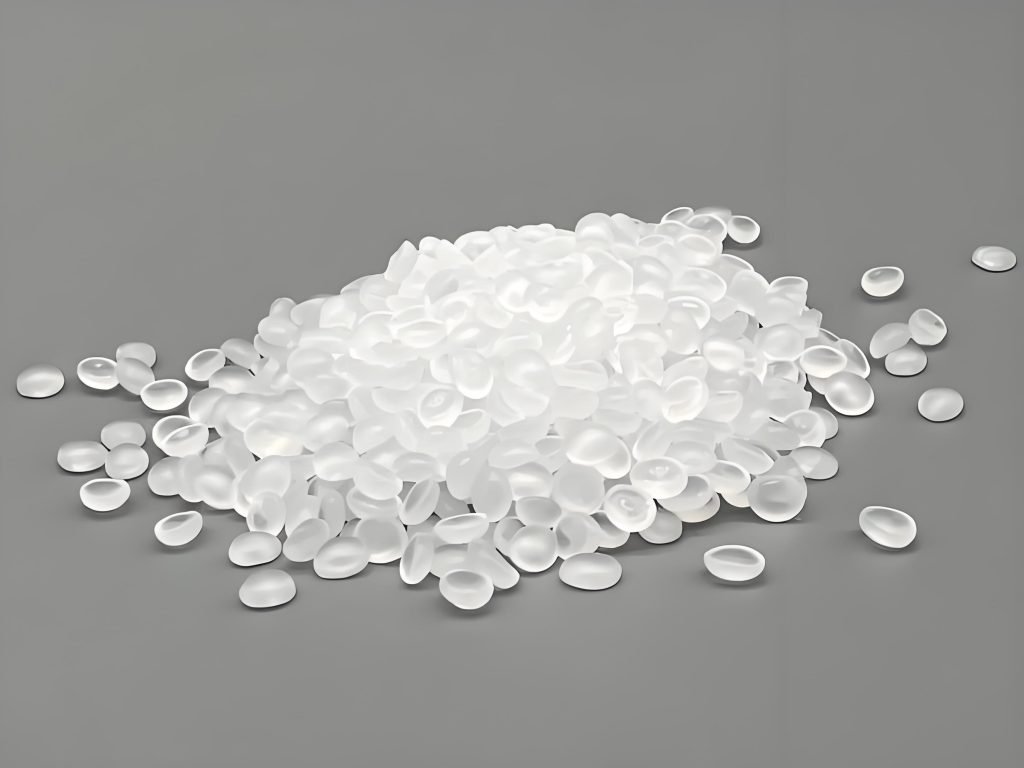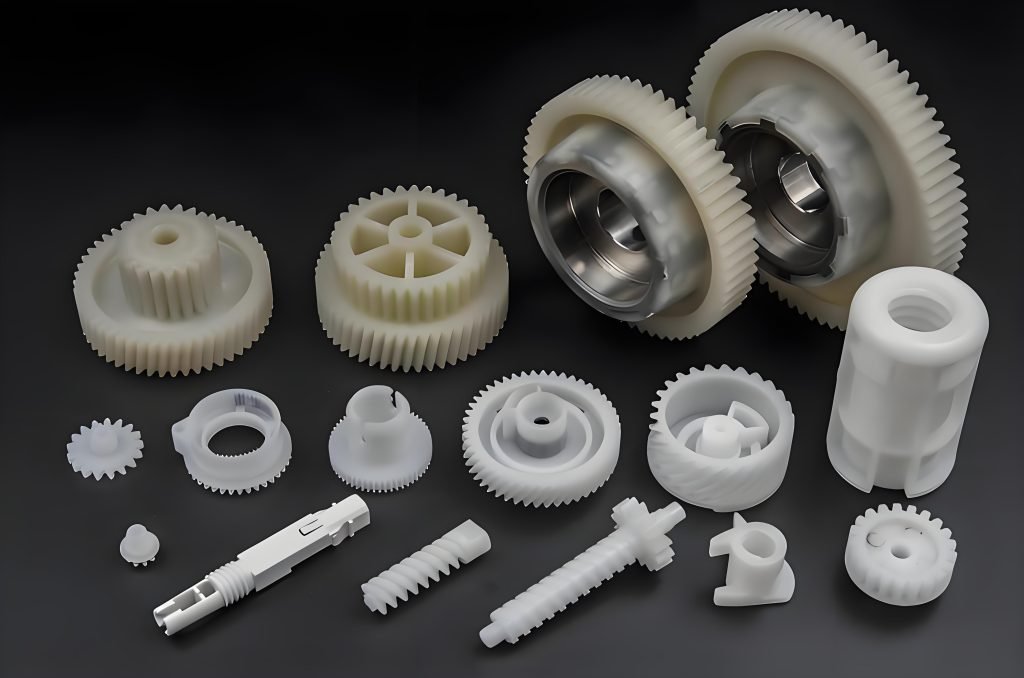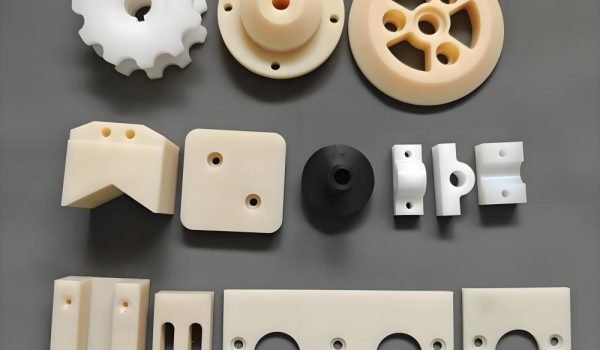Have you ever wondered why a single material can make parachutes, performance textiles, and precision gears?
You’ll get a clear, practical overview so you can pick the right grade for your project. Nylon is a family of polyamide thermoplastics first developed at DuPont in 1935. It moved from stockings to rugged wartime uses like parachutes and tents, and it keeps powering modern manufacturing and consumer goods.
Expect baseline properties such as strength, toughness, abrasion resistance, and good chemical resistance. Common melting points are about 428°F for PA 6 and roughly 500°F for PA 6/6. The material processes easily into fibers, films, and molded shapes, and it comes in grades including bio-based PA 11 and low-moisture PA 12.
Filled grades add stiffness and dimensional stability but can wear tooling more. At a high level, sustainability choices exist, yet end-of-life and microplastic issues remain part of your sourcing decisions.
Nylon at a Glance
Few engineering plastics match the balance of toughness and processability you get with nylon. As a polyamide, its repeating amide linkages and partial crystallinity create reliable baseline properties in strength, wear resistance, and electrical insulation.
What it is and how it behaves
PA polymers rely on hydrogen bonding between chains. That bonding boosts stiffness and toughness at common service temperatures. You can process grades into fibers, films, or molded parts using extrusion, spinning, injection molding, and 3D printing workflows.

Why you might choose it
Today, PA is used in clothing and technical textiles, films, and engineered parts like gears and housings. Keep in mind melting temperatures (about 220°C for PA 6 and 265°C for PA 6/6) and that ambient absorption can affect tolerances—so condition materials when precision matters.
Key Properties of Nylon You Should Know Before Selecting a Grade
Before you pick a grade, learn the practical properties that control part life and fit. This short guide helps you match performance needs to real-world conditions.
Mechanical performance
Benchmark mechanical properties early. This material delivers high tensile strength, notable toughness, and good fatigue resistance for gears, clips, and sliding parts.
Thermal behavior
Melting temperatures vary by grade: PA 6 melts near 220°C (428°F) while PA 66 melts closer to 260–265°C (500–509°F). Higher melting points raise usable heat and creep limits.
Chemical and electrical behavior
Expect strong chemical resistance to oils and many solvents but avoid strong acids and bases that attack amide links. As an electrical insulator, it provides reliable dielectric strength for housings and connectors.
Tribology and moisture
Many formulations show self-lubricity and work well in bearing roles, though surface finish and counterfaces matter. Moisture absorption alters dimensions and reduces modulus, so plan conditioning and storage to control tolerances.
Types of Nylon: Your List of Common Grades and Where They Fit
Here’s a clear rundown of common grades and where they perform best in real parts.
Nylon 6 (PA 6)
PA 6 is a workhorse. It delivers strong tensile strength and good toughness but shows notable moisture absorption. Plan conditioning for tight tolerances.
Nylon 6/6 (PA 66)
PA 66 brings higher crystallinity, roughly 20% more strength than PA 6, better wear behavior, and a higher melting point near 260°C. Use it where wear and heat matter.
Nylon 6/12 and PA 11–12
PA 6/12 and PA 12 cut moisture uptake and boost dimensional stability—ideal for fuel lines, cable jackets, and enclosures. PA 11 adds impact and UV resilience for outdoor snaps and hinges.
High-heat and niche grades
PA 4/6 offers faster crystallization and higher heat capability for underhood parts. Nylon 1/6 and 510 are niche: 1/6 absorbs more moisture; 510 is strong but costly for specialty components.
Filled and modified options
Glass or mineral fillers raise stiffness and stability. They improve bearing-like performance but increase tool wear. Add impact modifiers or UV stabilizers when chemicals or sunlight are a concern.
How Nylon Is Made: From Monomers to Molded Parts
Manufacturing starts at the molecular level, where monomers join into long chains that set the polymer’s structure and flexibility.
Two common polymerization routes dominate production. PA 66 forms by condensation of hexamethylenediamine and adipic acid. PA 6 comes from ring-opening polymerization of caprolactam. Each route affects chain length, melting behavior, and final properties.
After polymerization, melts are extruded through spinnerets or dies to make filaments, films, or pellets. Filaments are drawn to align chains for strength. Pellets feed injection systems and extrusion lines for part production.
For molded parts, pellets are dried, melted, and processed in injection equipment. Control melt temperature, residence time, and moisture to avoid defects and ensure surface finish.
Additives—glass, minerals, impact modifiers, UV stabilizers—and colorants are compounded to tune performance. Filled compounds boost stiffness but increase tool wear and screw torque.
Additive manufacturing uses PA 11 and PA 12 powders in SLS and MJF printing to make complex, functional parts. When you machine molded components, use sharp tools and cooling strategies to manage heat and prevent smearing.
Choosing Nylon for Injection Molding: Best Grades, Applications, and Fecision’s Services
When you design parts for high-volume molding, material choice drives cycle time, cost, and part life.
Recommended grades for molded parts
PA 66 suits load-bearing components and sliding interfaces thanks to higher melt temp and wear resistance.
PA 6 is tough and economical, but you must plan moisture conditioning for tight tolerances.
PA 6/12 and PA 12 reduce moisture uptake and hold dimensions, making them ideal for fluid-contact fittings and housings.
PA 4/6 shortens cycles and survives higher underhood temperatures when fast crystallization matters.
Design and process tips
Dry resin to spec, expect grade-specific shrinkage, and allow vents and draft for filled compounds.
Glass or mineral fillers raise stiffness and durability but increase mold wear and machining demands.
For bearings and wear pads, pair low-friction formulations with proper lubricant strategies.
Applications and Fecision support

Common applications include gears, bushings, connectors, fuel lines, enclosures, and select medical parts.
Fecision helps you validate your choice with DFM, optimize gates and cooling, and deliver precision mold fabrication and scientific molding for reliable production.
Conclusion
This short wrap-up helps you make a confident choice for parts and applications. Match strength and resistance needs to a family: PA 66 for higher heat and wear, PA 6 for value and toughness, and PA 11/12 when low moisture uptake and dimensional stability matter.
Remember tradeoffs. Filled grades add stiffness and durability but speed mold wear. Unfilled grades process easier yet need conditioning to control absorption and tolerances.
Consider environmental impacts in early design. Production and recycling emit greenhouse gases and microplastics remain a concern; bio-based PA 11 can lower fossil feedstock use.
When you’re ready, Fecision can validate grade choice, optimize tooling and process, and move your part from prototype to production with confidence.




